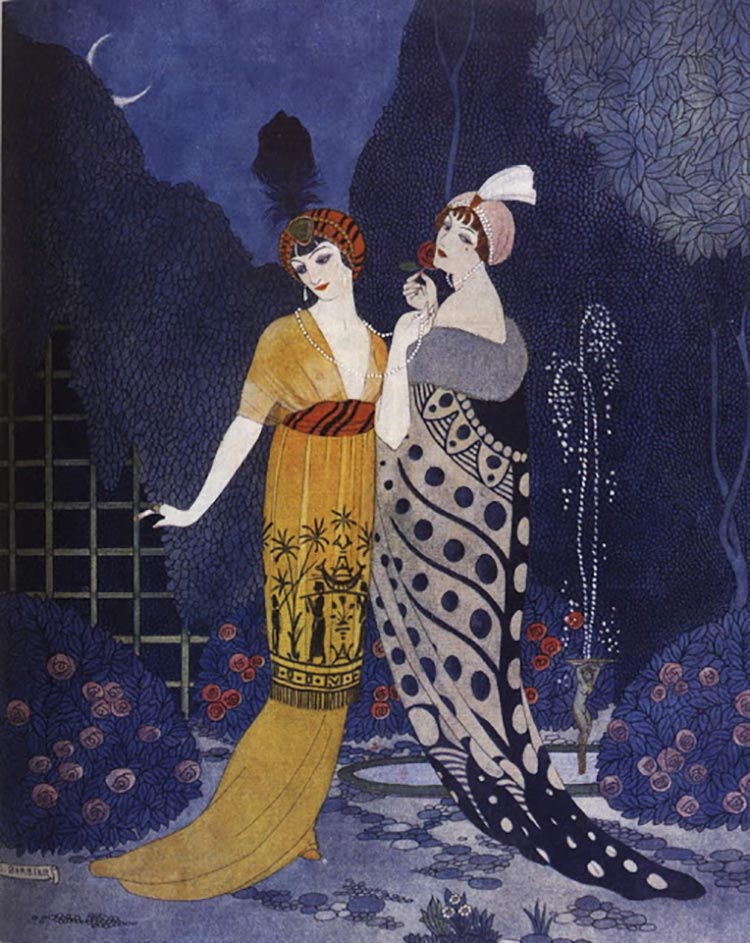Every era has its own colour trends. From art and architecture to commercial goods and fashion, historical eras each have their own defining colour palettes. This trend has certainly been magnified in the modern era with the mass production of goods.
Sometimes these dominant colours are driven by the designers and artists of the time and sometimes historical and cultural events have an impact on the popular colour that emerge. For example, during both the WWI and WWII periods, colour choices were more sedate and less showy, as seemed fitting for the time. But whatever the case may be, there is a correlation between history and colour.
It appears that with each new decade, a new colour wheel of swatches is made popular. It seems fitting somehow that a new decade calls for new colours. No one wants to paint the walls of their home or wear a dress using outdated colours. It’s human nature to want something new and fresh, and what better way to do that than with a whole new colour palette? And fashion is certainly a perfect artistic venue for defining the colours of a decade.
So, what are the dominant colours in fashion for the past decades?
The 1900s

This was the era of Belle Epoque, Art Nouveau, the Arts and Crafts movement, Tiffany, Faberge and of the designer Paul Poiret, who was instrumental in changing women’s fashion by doing away with the corset. The dominant colours were nature-inspired and somewhat muted by today’s standards. Yolk Yellow, Chinese Violet, Cadmium Green, Juniper, Sepia, Rich Gold.
The 1910s

Examples of the functional military-inspired colours of the 1910s.
The start of World War I had a profound impact on the fashions of this decade. The colours of choice were function and sensible and were influenced by military colours. Dress Blues, Trekking Green and Twill and Medal Bronze were colours of the day.
The 1920s

Lavender, Silver and Dusty Rose flapper dresses from the 20s.
The Roaring Twenties was the decade of flappers and speakeasies. It was also a decade of opulence and abundance and colours were rich and reflected the times. The colours of the evening were Silver, Jet Black, Lavender, Champagne, Dusty Rose.
The 1930s

Satin dresses in smokey colours from the 30s.
With the Depression, colours were both luxurious and practical. The emphasis was on colours that could stand the test of time and be worn again and again as need necessitated. Smokey and pearled colours like Smoked Pearl, Pearled Ivory, Shiitake, Fennel Seed, Jojoba, Green Milieu were fashionable.
The 1940s

Two-piece dresses in military colours.
The 40s was the decade of Dior’s New Look, which featured colours like Parfait Pink, Lavender Gray, Moonlight and Alabaster Gleam. In addition, military colours were dominant with the advent of WWII. Colours like: Dress Blues, Olive Gray, Tan, Desert Palm, Major Brown, Paprika and Blithe.

‘Venus’ by Dior in Alabaster Gleam.
The 1950s

Pastel day dresses from the 1957 Sears Catalog.
The dominant colours of the 50s were pastels and primaries, with the colours representing the carefree attitude that the post-war period offered. Pastels like Lemon Drop, Pastel Turquoise, Linden Green and Mint Green were popular. Cool, icy pastels were the colours of Hollywood and highlighted the cool elegance of stars like Grace Kelly and Audrey Hepburn.
Grace Kelly in Mint Green.

The 1960s

Jackie Kennedy in 1962 wearing Oleg Cassini in Desert Flower.
Saturated colours were the colours of the 1960s – the opposite of the pale pastels of the 50s. From the early 60s to the later psychedelic 60s, colours were purer. Colours like Amber Yellow, Sachet Pink, Jaffa Orange, Purple and Dessert Flower were popular.

Psychedelic Mod Dress
70s wrap dress in Avocado.

The 1970s was the decade of earthy and eclectic colours. The 70s saw the start if the environmental movement and this helped to inspire fashion and consumer goods. Earth tones like Avocado, Golden Olive, Harvest Gold, Burnt orange and Cinnabar were dominant.
Which decade do you like best?















You must be logged in to post a comment.